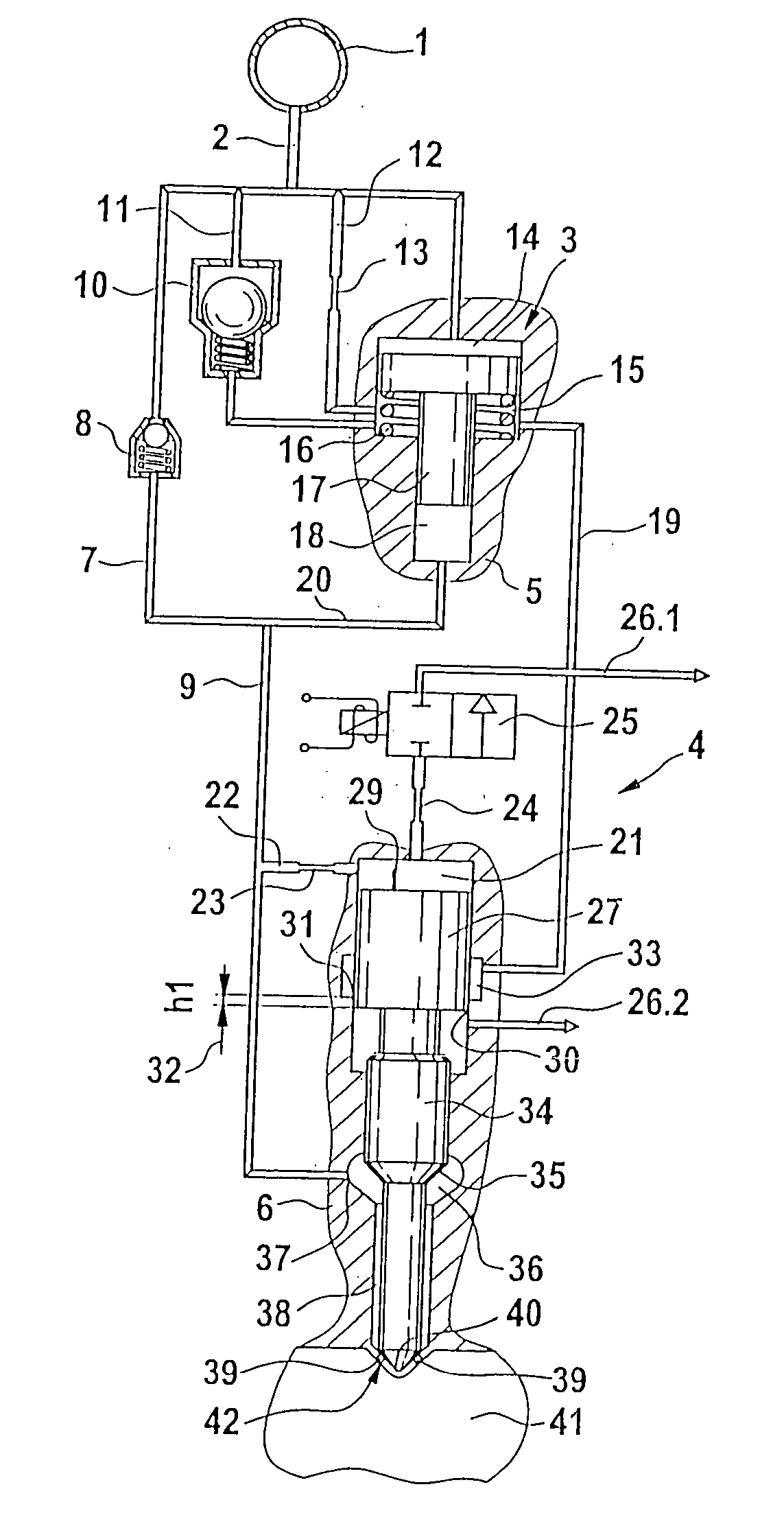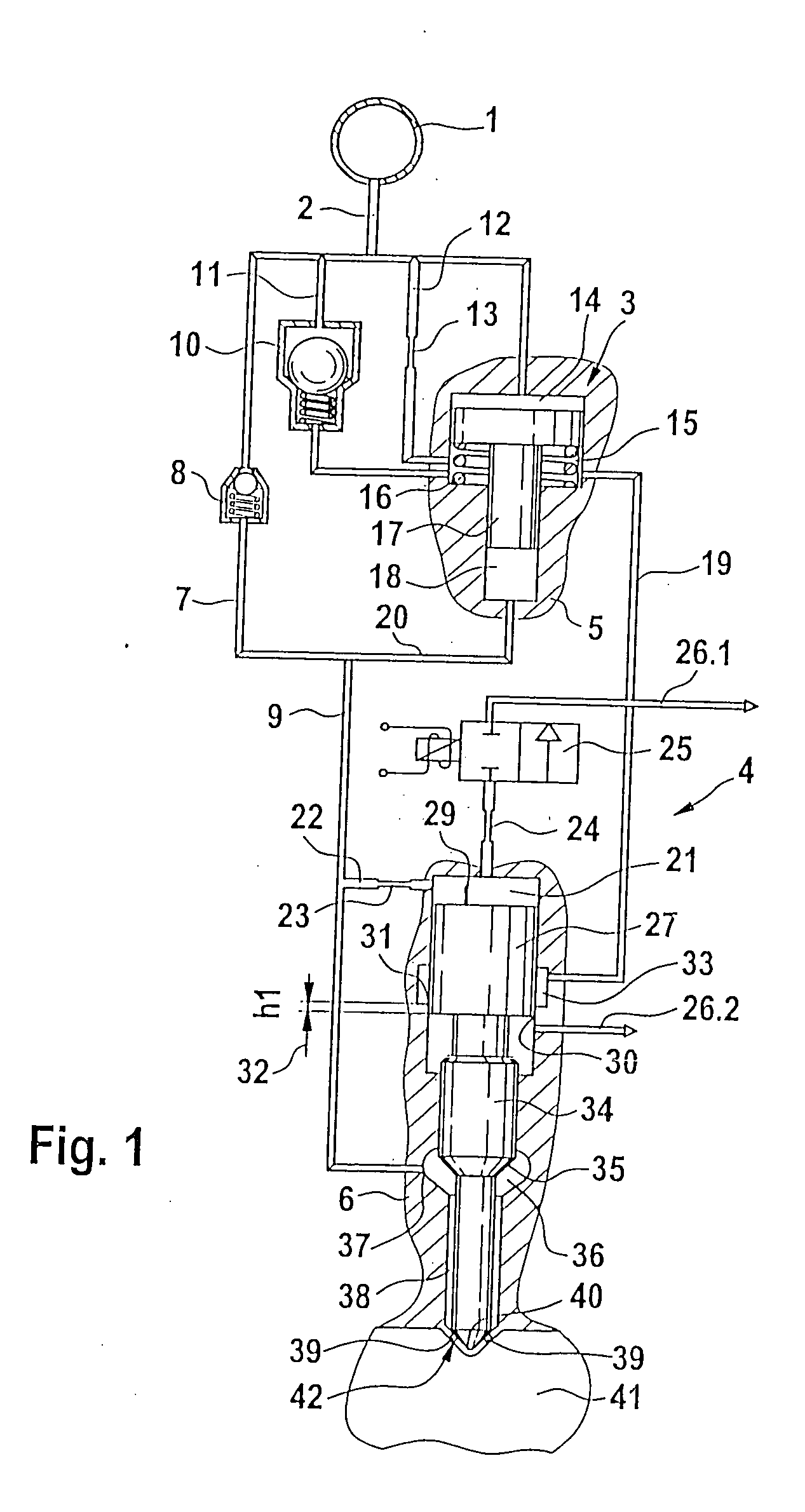Control of a pressure exchanger by displacement of an injection valve member
a technology of pressure exchanger and injection valve, which is applied in the direction of fuel injection apparatus, machine/engine, feed system, etc., can solve the problem of limited pressure level in the current use of accumulator injection system
- Summary
- Abstract
- Description
- Claims
- Application Information
AI Technical Summary
Benefits of technology
Problems solved by technology
Method used
Image
Examples
embodiment versions
[0012]FIG. 1 shows a first embodiment version of a pressure booster that can be actuated by an injection valve element, depicted in a first state in which the control chamber of the pressure booster is disconnected from the return, i.e. from the low-pressure region of the fuel injection system.
[0013] Starting from a high-pressure source 1, which can be embodied, for example, as a high-pressure accumulator (common rail), a high-pressure inlet 2 extends to a pressure booster 3. The high-pressure inlet 2 has a high-pressure line 7 that can contain a check valve 8. Parallel to the high-pressure line 7, the high-pressure inlet 2 from the high-pressure source 1 acts on a parallel branch 11 that can contain a filling valve 10. Another branch 12 extends parallel to it, which contains a throttle restriction 13. The first parallel branch that contains the filling valve 10 and the additional parallel branch 12 that contains the throttle restriction 13 feed into a control chamber 15 of the pre...
PUM
 Login to View More
Login to View More Abstract
Description
Claims
Application Information
 Login to View More
Login to View More - R&D
- Intellectual Property
- Life Sciences
- Materials
- Tech Scout
- Unparalleled Data Quality
- Higher Quality Content
- 60% Fewer Hallucinations
Browse by: Latest US Patents, China's latest patents, Technical Efficacy Thesaurus, Application Domain, Technology Topic, Popular Technical Reports.
© 2025 PatSnap. All rights reserved.Legal|Privacy policy|Modern Slavery Act Transparency Statement|Sitemap|About US| Contact US: help@patsnap.com



